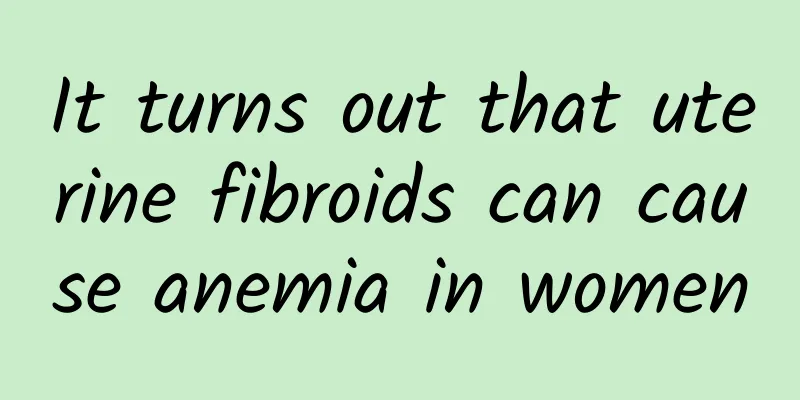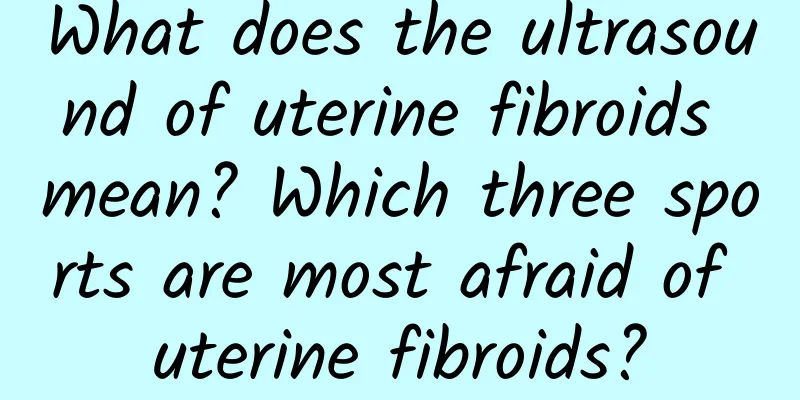Where are subserosal uterine fibroids located? What are the most common symptoms of subserosal uterine fibroids?

|
Where are subserosal uterine fibroids located? What are the more common symptoms of subserosal uterine fibroids? Subserosal uterine fibroids are a common gynecological disease. They are tumors formed by non-malignant proliferation of smooth muscle cells in the myometrium under the endometrium, and they mostly occur in middle-aged women. The location of uterine fibroids can be divided into different types, including subserosal uterine fibroids. Subserosal uterine fibroids are located in the subserosal layer of the uterine wall, which is the outermost layer of the uterus and is connected to the uterine cavity. Therefore, it may form in any part of the uterus. Subserosal uterine fibroids usually appear as single or multiple nodular masses of varying sizes. It can affect the normal endometrialization process of the endometrium and have a certain impact on women's menstrual cycle and fertility. Symptoms of subserosal uterine fibroids vary, depending on the size and location of the tumor. Some common symptoms include: 1. Irregular menstruation: Subserosal uterine fibroids may cause irregular menstruation, such as menorrhagia, prolonged menstrual cycle, and prolonged menstruation. 2. Pelvic pain: The growth of fibroids may cause pelvic pain or discomfort, especially during sexual intercourse and urination. 3. Compression of the bladder: If subserosal uterine fibroids grow close to the bladder, it may cause a feeling of compression, leading to frequent and urgent urination. In addition, according to research, subserosal uterine fibroids may also cause other symptoms, such as pelvic pressure, waist discomfort, abdominal mass, etc. If the fibroids are large or numerous, they may cause more serious symptoms such as anemia and compression of abdominal organs. The exact cause of subserosal uterine fibroids is still unclear, but it is generally believed that abnormal hormone levels and genetic factors play a role in their occurrence and development. Genetic factors can affect hormone metabolism in the body, leading to the growth of fibroids. In addition, changes in women's hormone levels, such as progesterone, estrogen, and ovarian hormone, may also promote the occurrence of subserosal uterine fibroids. For women with subserosal uterine fibroids, treatment options may be determined based on the severity of the condition and factors such as the patient's age and fertility plans. In general, observation plus conservative treatment can be used for mild symptoms or for women before menopause. For patients with significant symptoms or unaffected fertility, surgical removal of the uterine fibroids may be a better option. For women with severe symptoms or limited fertility, hysterectomy may need to be considered. In conclusion, subserosal uterine fibroids are a common gynecological disease, and its common symptoms include irregular menstruation, pelvic pain, and bladder compression. It can cause discomfort to women by affecting the menstrual cycle and the endometriosis process. Understanding the symptoms and treatment methods of subserosal uterine fibroids is very important for women's health. If you suspect that you have subserosal uterine fibroids, please consult a professional doctor and seek treatment advice in time. |
Recommend
How many days of pregnancy does spontaneous abortion usually occur?
Spontaneous miscarriage usually occurs before 28 ...
What are the clinical symptoms of endometriosis?
Endometriosis has a serious impact on women's...
Are cervical warts life-threatening?
As the incidence of cervical warts gradually incr...
Bartholinitis is getting more and more painful. How to relieve the pain?
If the pain of Bartholin's glands gets worse,...
What diseases can severe cervical erosion cause?
What diseases can severe cervical erosion cause? ...
Detailed introduction to several causes of menopause
If menopausal patients are not treated, they will...
What are the causes of irregular menstruation in women? How can women regulate irregular menstruation?
Irregular menstruation is a problem for many wome...
Have you ever heard of bacterial vaginosis?
Vaginitis is a common disease, and the number of ...
What can easily cause miscarriage? Here are 5 things
Pregnancy is a very happy thing for most people. ...
How long should I continue to take medication for cervicitis?
It is usually recommended that medications be use...
Introduction to the treatment of early ectopic pregnancy
Patients with early ectopic pregnancy all know th...
What can I eat to repair uterine fibroids faster? What can I eat to improve uterine fibroids?
What can I eat to repair uterine fibroids faster?...
What should I do if my period is delayed for 7 days?
What should I do if my period is delayed for 7 da...
How to successfully preserve the fetus during threatened abortion
Threatened abortion refers to a small amount of v...
What should I do if I have severe breast pain before my period?
What should I do if I have severe breast pain bef...









